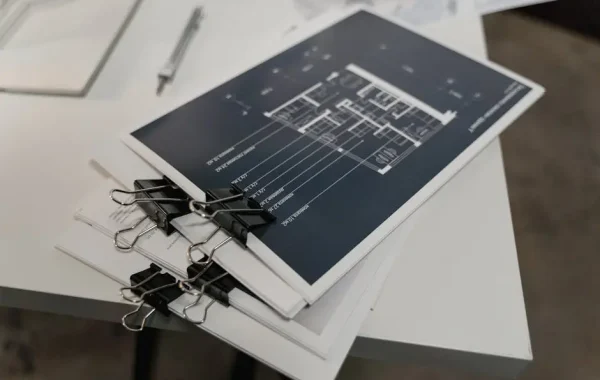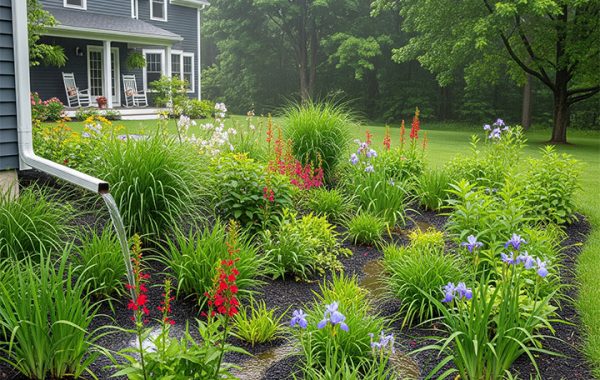
15 Cutting-Edge Design Innovations for Institutional Facilities
In today’s rapidly evolving world, institutional facilities like schools, hospitals, and offices are continuously seeking new ways to improve functionality, sustainability, and aesthetics. This blog delves into some of the most exciting design innovations that are transforming these spaces into more efficient and appealing environments.
1. Biophilic Design Principles
Biophilic design is the integration of nature into building architecture. This approach aims to improve mental well-being and productivity by increasing connectivity to the natural environment through the use of plants, natural light, and organic materials.
Incorporating biophilic elements into design doesn’t just provide aesthetic beauty; it has been shown to reduce stress and improve cognitive function. For instance, the presence of indoor gardens and ample window spaces that allow natural sunlight to stream in can make institutional environments more vibrant and conducive to focused work.
The importance of biophilic design extends beyond individual wellness. By promoting a connection with nature, design can support sustainability efforts, creating spaces that not only look good but also contribute positively to their surroundings by reducing carbon footprints and improving air quality.
2. Adaptive Reuse of Spaces
Turning old structures into functional new spaces is a trend that both preserves history and reduces waste. Institutions are finding creative ways to adapt and modernize existing buildings to meet contemporary needs.
Adaptive reuse can revitalize communities, breathing new life into neglected areas while preserving cultural heritage. This approach involves transforming old warehouses into modern offices or converting underused schools into community centers, which can significantly reduce the environmental and financial costs associated with new construction.
3. Smart Building Technologies
Implementing smart technologies in facility management can lead to increased efficiency and occupant comfort. Features like automated lighting, temperature control, and security systems are becoming the norm.
Smart buildings are equipped with sensors and controls that facilitate real-time data analysis, enabling institutions to optimize resource usage and enhance security measures. These advances not only improve the operational efficiency of facilities but also contribute to greater user satisfaction by personalizing the indoor environment to meet the needs of its occupants.
4. Sustainable Material Selection
The choice of building materials has a profound impact on the environment. Emphasizing materials that are renewable, recyclable, and less energy-intensive to produce is a key innovation for sustainable design.
Utilizing materials such as bamboo, reclaimed wood, and recycled steel can substantially reduce the carbon footprint of a building project. As more designers opt for eco-friendly materials, institutions can position themselves as leaders in sustainability, creating a ripple effect across industries to adopt responsible practices.
5. Flexible and Modular Furniture
Modular and reconfigurable furniture allows spaces to adapt to changing needs, making them ideal for multipurpose environments. This flexibility encourages creativity and collaboration.
In educational settings, flexible furniture supports interactive learning by allowing classrooms to transform quickly to suit different uses, such as lectures, group work, or presentations. This adaptability ensures that space can be fully utilized, no matter the activity or user preference.
6. Energy-Efficient Lighting Systems
New lighting technologies, including LED and smart lighting solutions, offer significant energy savings and can integrate with digital systems to provide optimal lighting conditions with minimal energy use.
Beyond cutting energy consumption, advanced lighting systems can enhance the ambience of spaces. For instance, lighting that is programmable and sensitive to natural light can vary in intensity and color temperature throughout the day, enhancing both the user’s mood and the aesthetic appeal of a facility.
7. Acoustic Management Solutions
Noise can be a major distraction in institutional settings. Innovative acoustic management solutions focus on reducing noise pollution, thus creating a more pleasant and productive environment.
Implementing acoustic design involves strategically using materials and structures to absorb or block sound. This can include using soundproof windows, walls with sound-absorbing materials, and even installing acoustic panels that double as decorative art pieces, enhancing both the look and functionality of a space.
8. Open and Collaborative Spaces
Open layouts encourage collaboration and communication among users, fostering a sense of community and innovation. These spaces are designed to be dynamic and adaptable to various activities and user needs.
By removing walls and creating fluid spaces, institutions can boost creativity and efficiency. The use of flexible furniture and multipurpose designs in open spaces can facilitate a range of activities, from informal meetings and workshops to large group collaborations.
9. Green Roof and Wall Systems
Incorporating green roofs and walls brings environmental and aesthetic benefits. They help manage stormwater, provide insulation, and enhance the visual appeal of urban landscapes.
These vegetative systems not only improve the ecological footprint of buildings but also contribute to cleaner air and a cooler local climate. Green roofs and walls serve as living insulation, significantly reducing energy costs by moderating indoor temperatures and increasing biodiversity in urban jungles.
10. Touchless Technologies
The demand for touchless interactions has surged, particularly in response to health concerns. Automated doors, voice-activated controls, and contactless check-ins contribute to safer and more hygienic spaces.
These technologies are becoming crucial for minimizing germ transmission and maximizing convenience in public spaces. For example, touchless restroom fixtures and digital concierges ensure a seamless, safe experience for users, aligning with the growing need for health-conscious design.
11. Virtual Reality in Design Planning
Using VR technology for planning and visualization allows stakeholders to experience and modify space designs in a virtual setting, ensuring ideas come to life effectively before physical construction begins.
Virtual reality can simulate lighting, acoustics, and layout options, providing a comprehensive understanding of a planned space. This enables designers, clients, and end-users to provide input and make informed decisions, ultimately leading to better-designed facilities that meet everyone’s expectations.
12. Daylighting and Natural Ventilation
Utilizing natural light and ventilation reduces the need for artificial solutions, leading to energy savings and healthier indoor environments by improving air quality and providing a connection to the outdoors.
By integrating large windows, skylights, and strategic placement of vents, facilities can stay cooler in summer and warmer in winter. This not only cuts down on energy expenses but also supports the well-being of occupants by offering natural views and fresh air throughout the day.
13. User-Centric Design Approaches
Designing with the end-users in mind ensures that spaces are tailored to their specific needs and preferences, resulting in functional, comfortable, and welcoming environments.
Incorporating user feedback into the design process can lead to innovative solutions that enhance user satisfaction. Whether through mobile apps collecting real-time feedback or participatory design workshops, understanding users’ experiences can guide impactful improvements in design.
14. Resilient and Robust Architecture
Building for resilience means considering future-proof designs that can withstand environmental changes and external pressures, ensuring longevity and durability of facilities.
Resilient design anticipates extreme weather conditions and natural disasters, ensuring buildings remain functional during and after such events. This might include the use of reinforced materials and structures that can adapt to shifting conditions, safeguarding both the physical infrastructure and its users.
15. Interactive Learning Environments
In educational settings, interactive designs support engaging learning experiences through technology integration and adaptable spaces that cater to diverse teaching methods and student needs.
Interactive whiteboards, digital kiosks, and flexible seating arrangements ensure that learning environments are as dynamic as the subjects being taught. With this setup, educators can tailor their pedagogical approaches to fit various learning styles, enhancing the educational experience for students.




